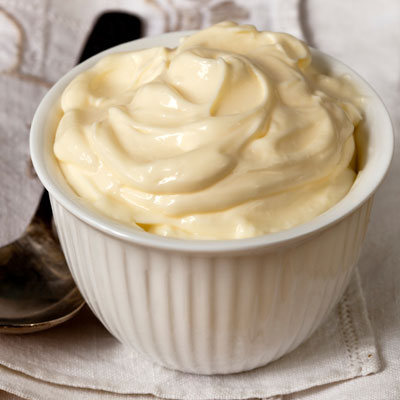
Fresh faced
Be a natural beauty

No more frizz

Kale
It’s one of the best sources of lutein and zeaxanthin, nutrients that absorb and neutralize the free radicals created by UV light—including the wavelengths that actually get through sunscreen and reach your skin, according to research inClinics in Dermatology. Plus, just one cup gives you 134% and 133% of your daily value for skin-firming vitamin C and A, respectively. (Take your kale to a new level with chef Sam Talbot's crunchy kale chips recipe.)

Orange peel
Researchers from the University of Arizona looked at people who reported that they ate citrus fruits, juices, and peels weekly. People who ate peels (orange peel or lemon zest, for example) had a 33% decreased risk for squamous cell carcinoma. Juice and fruit didn’t have any effect. The researchers credit limonene, a compound found in the oil in the peels that offers the UV-protective benefits. (Check out these tasty ways to eat fruit and veggie peels.)

Grass-fed beef
Not only does grass-fed beef contain a higher ratio of omega-3 to omega-6 fatty acids (to reduce inflammation), but it also packs nearly 30 grams of protein per 3.5-ounce serving. “Protein is the building block of collagen and elastin tissue, which keeps skin taut and less wrinkled,” says Dr. Wu. Choose lean cuts like sirloin tip and flank ste

Rosemary
Consuming four or more herbs regularly—rosemary or thyme, for example—was associated with up to a 60% reduced risk of melanoma, finds a study in the International Journal of Epidemiology. Herbs pack a ton of antioxidants into a tiny skin-protecting package, squelching free radicals from the sun before they can damage skin.

Almond milk
This makes the list because of what it’s not: dairy. “Research shows dairy is highly inflammatory, which means it will aggravate acne, wrinkles, and rashes,” says Dr. Wu. When you drink coffee or pour a bowl of whole grain cereal, she recommends using a non-dairy milk, like unsweetened almond milk. (Make your own almond milk with this easy recipe!)

Water
Yes, water keeps your skin hydrated—and staying hydrated makes it appear more plump and less wrinkled. But there’s another reason to fill up on water over other drinks: You’ll save on sugar. Sugars found in juices, sodas, and sports drinks cause your skin major woes, says Drayer. “When blood sugar levels are high, sugars can attach to proteins in collagen and produce compounds that cause skin to sag and wrinkle.” (Bored with plain water? These 25 sassy water recipes will totally fix that.)

Oysters
You’re looking at the best source of dietary zinc. Six of these bivalves provide over 500% of your daily need in a scant 57 calories. The mineral plays an important role in the growth and function of skin cells and, though more research is needed, some studies suggest that acne sufferers have lower than normal levels of zinc.

Yellow bell peppers
One study in the British Journal of Nutrition found that people who ate the most green and yellow vegetables (up to 250 grams; one large pepper is about 190 grams) had fewer wrinkles, especially in the crow’s feet area, compared to those who at the least amount (69 grams a day). This may be because of antioxidants that fight aging free radicals, says Dr. Wu.

Coffee
Women who drank coffee every day had an 11% lower prevalence of non-melanoma skin cancer (the most common form of skin cancer) compared to people who don't drink coffee, according to a study published in the European Journal of Cancer Prevention in 2007. Downing six cups a day of caffeinated coffee slashed the risk by 30%, however, experts say to keep your habit under 28 cups a week, as higher consumption may lead to other health concerns. As with anything, moderation is key.

Kiwi
This little fruit packs a wallop of vitamin C—nearly 120% of your daily needs in one medium kiwi. “C stimulates collagen synthesis, which keeps skin taught and smoothes fine lines,” says Drayer. She sites a study in the American Journal of Clinical Nutrition that found a diet high in vitamin C was associated with less dryness and less noticeable wrinkles.

Red wine
When Australian researchers analyzed the diets of more than 1,000 adults, they discovered that the rate of actinic keratoses (skin lesions caused by long-term sun damage) was reduced by 28% in those that sipped a half glass of red wine a day. Red wine is a top source of resveratrol, an antioxidant compound with anti-tumor properties.

Chickpeas
Korean researchers found that when adults followed a low–glycemic load diet for 10 weeks, they reduced both painful inflamed pimples and red spots. Why? High-glycemic diets include foods that rapidly increase blood sugar, causing high insulin levels that are thought to lead to hormonal changes that cause acne. Beans, particularly chickpeas, are low on the glycemic index since they’re rich in protein and fiber, two nutrients that slow down digestion and lower the blood sugar response.
More from Prevention: The 50 Healthiest Foods For Women

No comments:
Post a Comment